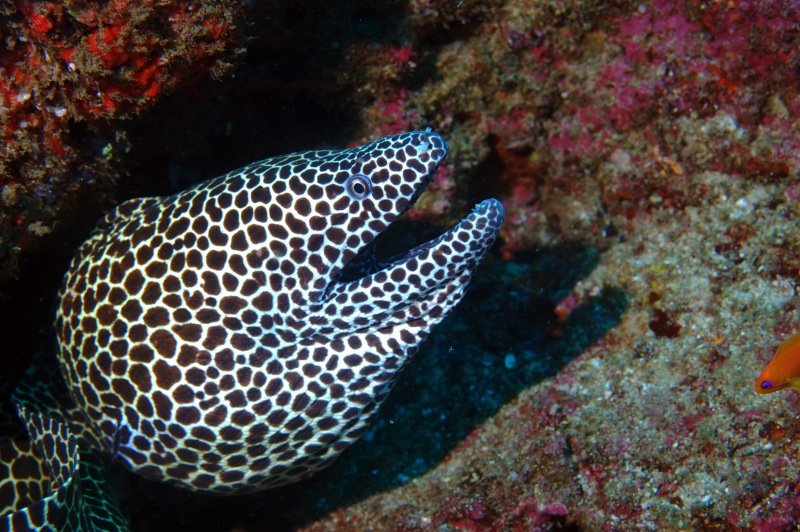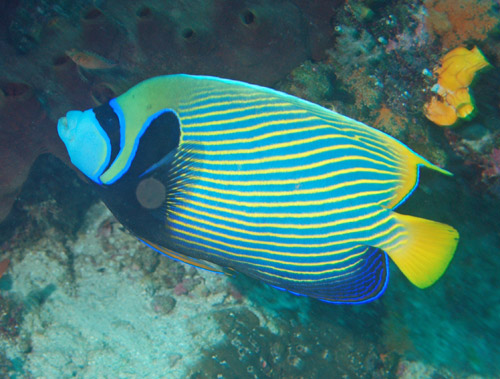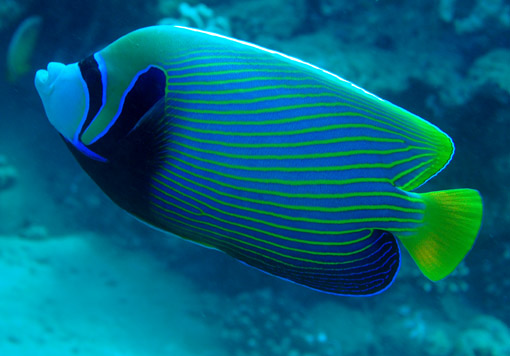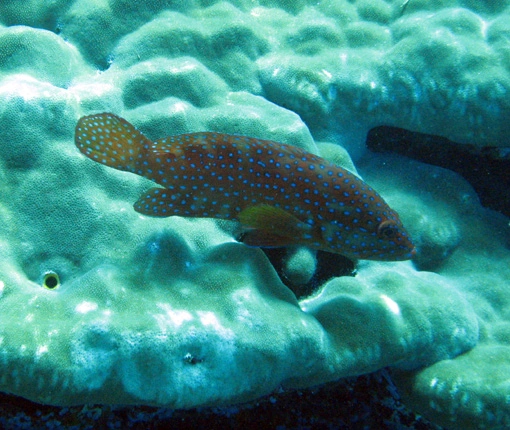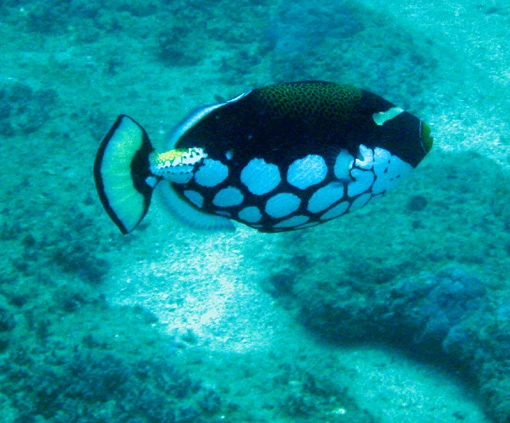
The clown triggerfish, Balistoides conspicillum, is a triggerfish from the order Tetraodontiformes. This reef-associated fish is commonly found in the tropical Indo-Pacific and Red Sea.
This species is a primarily marine species. This fish is found in Tropical Indo-Pacific and Red Sea coastal waters from 1-75 metres in depth (3-250 ft). This fish is generally uncommon or rare throughout its range, which includes East Africa to South Africa, through to Indonesia, and all the way to Japan and New Caledonia. The clown triggerfish is most commonly found around coral reefs. It lives in clear coastal to outer reef habitats. It also occurs in clear, seaward reefs near steep drop-offs.
The fish can reach up to about 50 cm (20 in) in length.[1] It has strong jaws which can be used to crush and eat sea urchins, crustaceans and hard-shelled mollusks.
This fish has unique coloration. The ventral surface has large, white spots on a dark background, and its dorsal surface has black spots on yellow. There is a vertical, white (slightly yellow) stripe on the caudal fin. This fish has a form of camouflage that is, or is similar to, countershading. From below, the white spots look like the surface of the water above it. From above, the fish will blend in more with the coral reef environment. (text source: wikipedia)
 Picture: Andaman&Nicobar, India by Sami Salmenkivi
Picture: Andaman&Nicobar, India by Sami Salmenkivi
